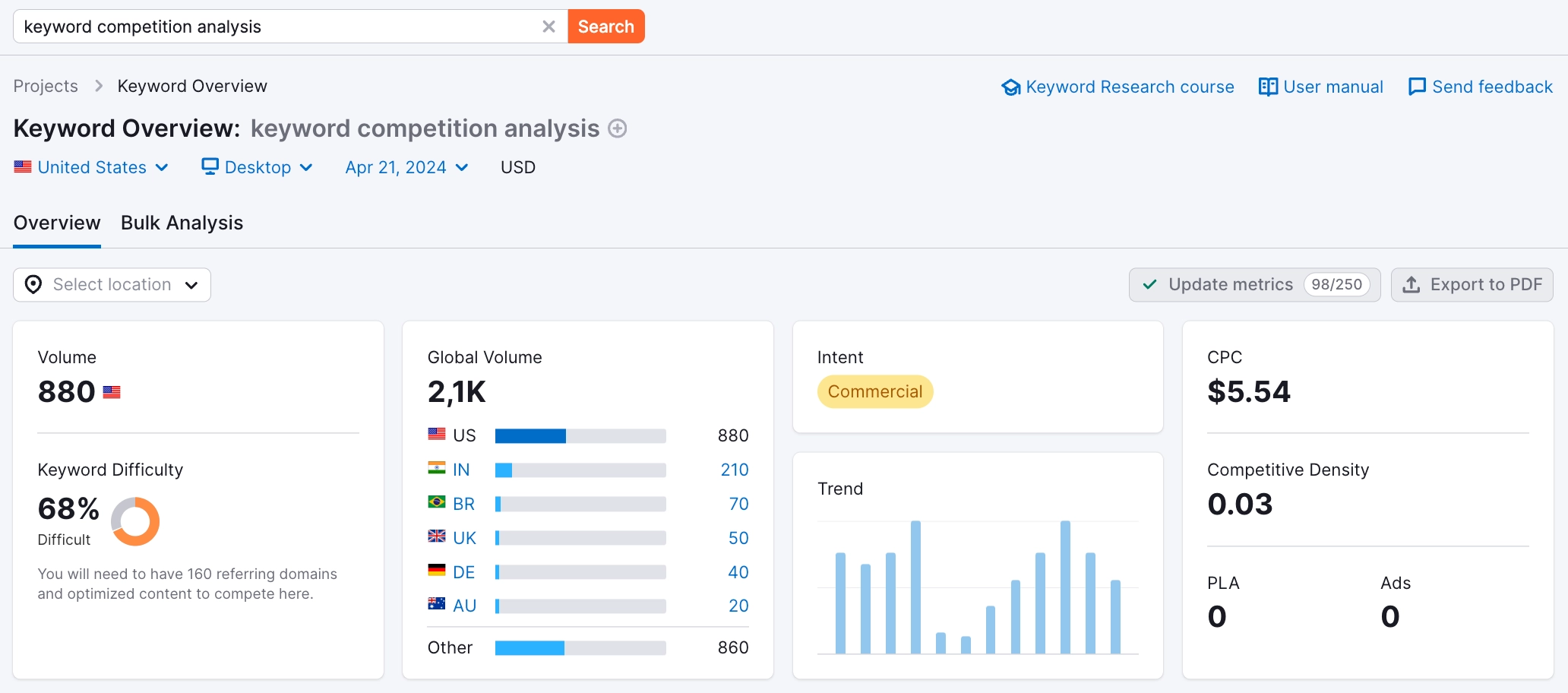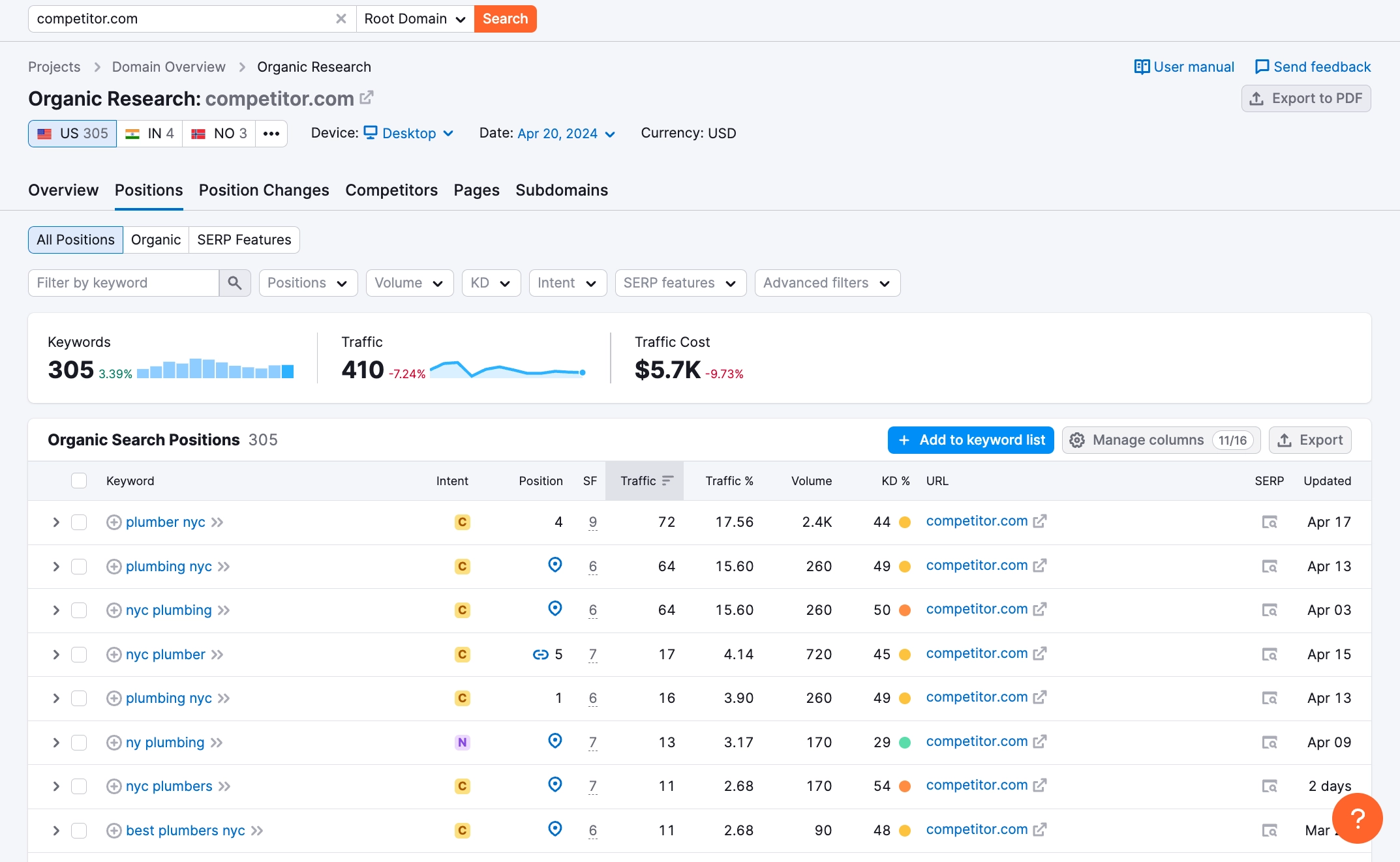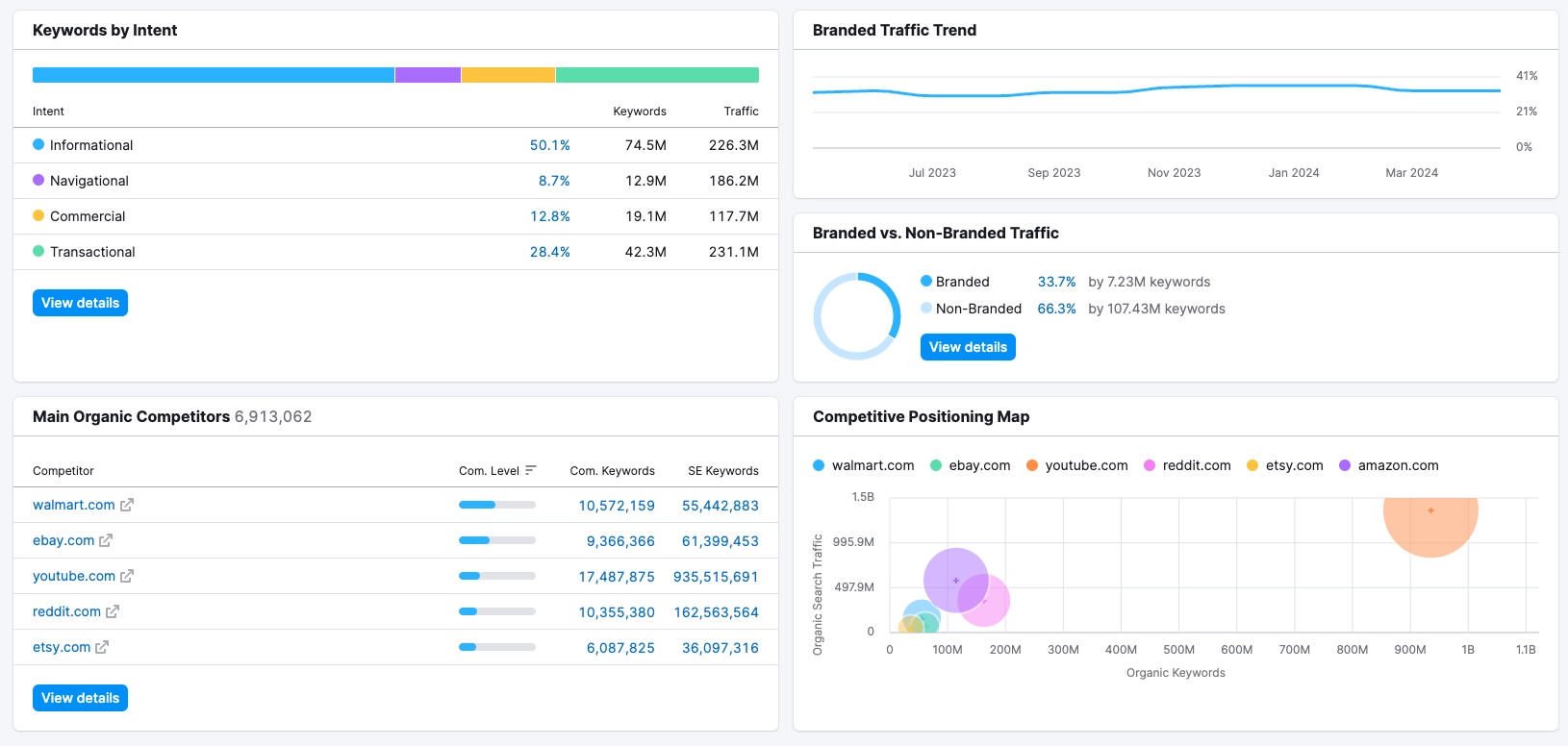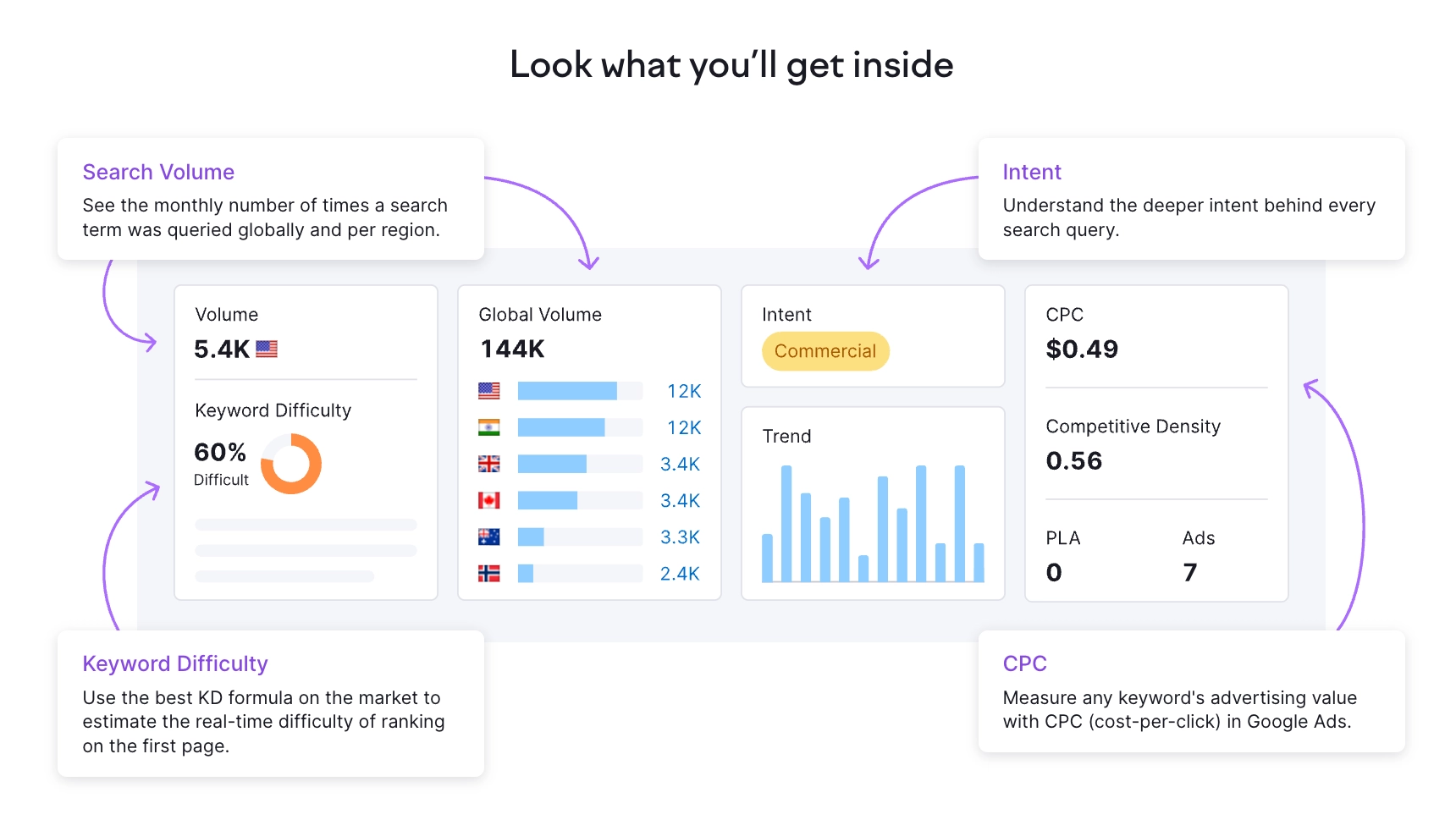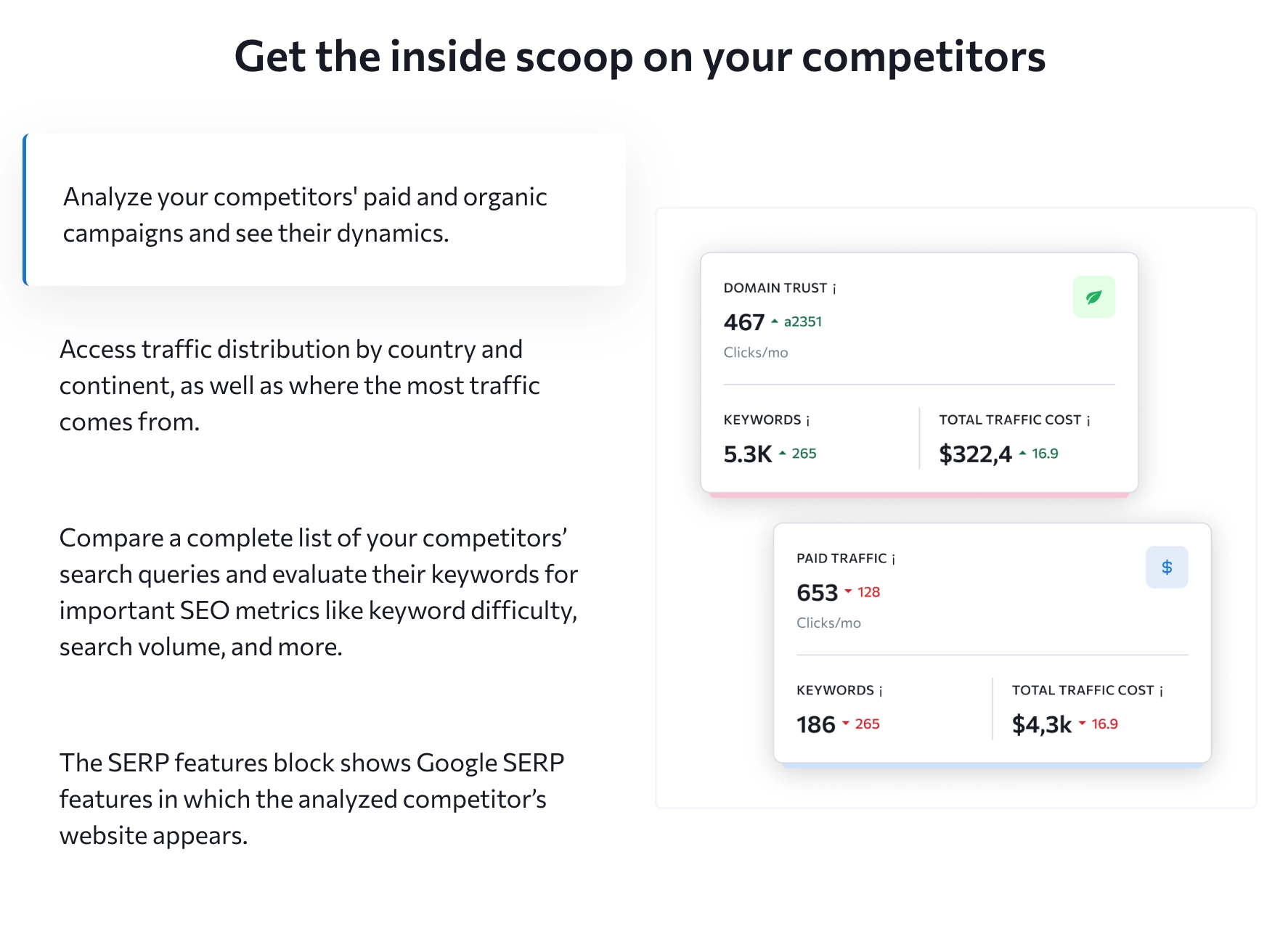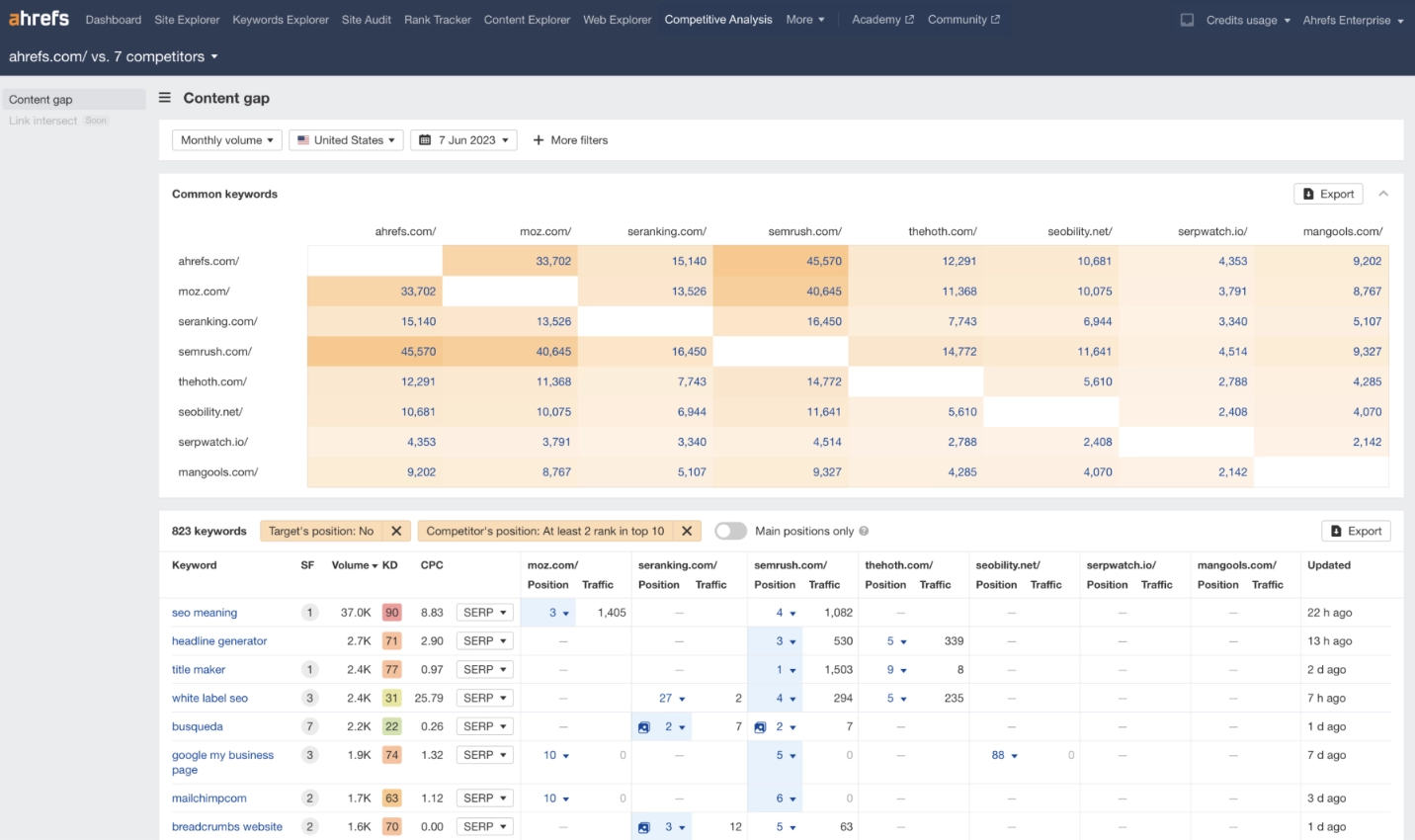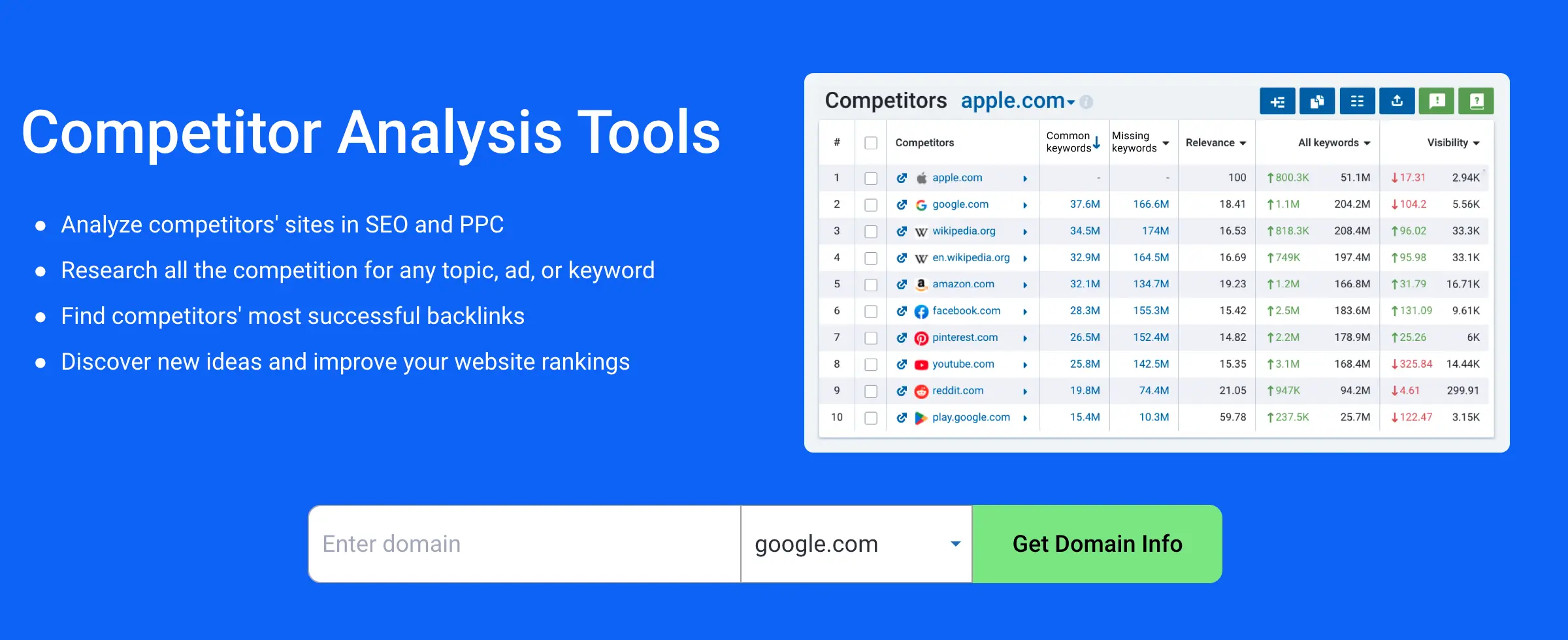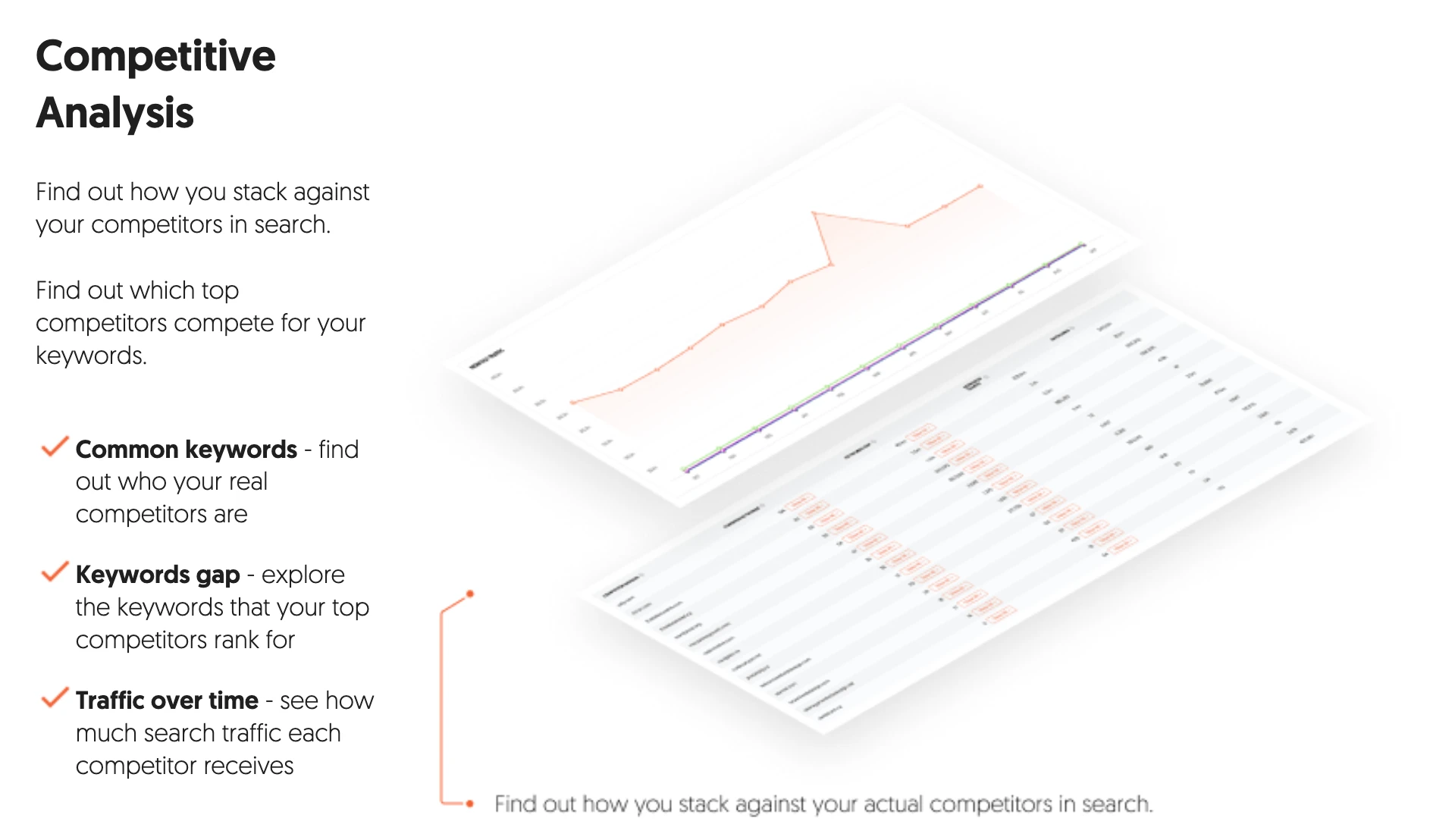All those who own a website have a common goal: increase website traffic in order to get more conversions. Bringing internet users to your site requires time and investment in an SEO strategy.
Also, to achieve the top search results, you will inevitably, at some point, have to overtake your competitors. To do this, it is crucial to have information about their SEO techniques.
Analyzing the keywords used by your competitors will allow you to develop your own strategy and identify the resources you will need to surpass them.
But first let’s find out the definition of keyword competition analysis.
What is Keyword Competition Analysis?
Keyword competition analysis is the process studying your competitors' websites using various SEO tools to see what keywords they're ranking for in search engines. By understanding this, you can inform your own SEO strategy with content creation and link building plan.
Let’s see what it looks like in more detail. To conduct competitor keyword analysis, you’ll need a good SEO tool that has a broad keyword base and regularly crawl Google rankings to show you relevant data.
E.g. this is how it looks to analyze competitor keywords for plumbing niche in NYC by using Semrush:
As you can see there are many columns you might not understand, but let us to chew through everything in detail for you.
Keyword
"Keyword" represents the specific search terms that the competitor's website is ranking for in search engine results
Intent
The "Intent" column in Semrush's Organic Research tool indicates the likely purpose behind a user's search query, which can generally be categorized into four main types: Informational: The searcher is looking for information. These queries are usually questions or broad topics, like "how to tie a tie" or "what is brand salience". Navigational: The searcher intends to find a specific website or page. For example, "Facebook login" or "Seotwix home page". Commercial: The searcher is considering a purchase and wants to compare options or find the best product. These queries might include terms like "buy running shoes online" or "best website design tools". Transactional: The searcher is ready to make a purchase or complete an action, such as "subscribe to Semrush" or "hire a technical SEO consultant".
Position
The "Position" column shows the ranking of your competitor's website for a specific keyword in search engine results. For example, a position of 1 means the website is the top result for that keyword. The column shows rankings from 1 to 100 , with 1 being the highest (top of the first page) and 100 indicating the bottom of the tenth page in search results.
Search Features (SF)
This column indicates whether the keyword triggers any special search features or elements in Google search results, such as featured snippets, knowledge panels, local packs, or image packs.
Traffic
The "Traffic" columns estimate the amount of traffic a competitor's website receives from each keyword. It also shows the percentage of total traffic driven to the site from that specific keyword, based on its position in search results and the keyword's search volume.
Volume
This column shows the average number of monthly searches for a specific keyword over the last 12 months. This metric helps gauge the popularity and demand for a keyword, indicating how often people are searching for it in search engines. A higher search volume suggests a keyword has a larger potential audience, making it a valuable target for SEO efforts.
Keyword Difficulty (KD)
It indicates how difficult it would be to rank in the top 10 search results for a specific keyword. The percentage is calculated based on the authority and quality of the domains currently ranking for that keyword and other SEO factors.A higher KD% means it is more challenging to compete for high rankings with that keyword, suggesting the need for a robust SEO strategy and possibly significant resources to achieve a top position. Conversely, a lower KD% indicates that it may be easier to rank for that keyword.
URL
The "URL" displays the specific webpage URL from a competitor's website that ranks in search engine results for the listed keyword. This information helps you identify which pages are successfully attracting organic traffic for certain keywords. By examining these URLs, you can analyze the content and SEO strategies that might be contributing to their high rankings.
SERP
The "SERP" column refers to the snapshot of the search engine results page for a specific keyword. This feature allows you to view the actual appearance of the Google search results when the data was last updated, showing what types of listings (such as ads, organic results, featured snippets, etc.) were present and how they were arranged.
Update
This column indicates the last date the data for a specific keyword was updated. This helps you understand how current the information is, ensuring that you are making decisions based on the most recent search engine results data.
Want to find out more about keyword metrics? Check our post.
How to identify competitors?
Start by performing a simple Google search with the keywords you want to rank for. This allows you to identify companies playing in the same field as you and learn their rankings.
It goes without saying, there’s no point in embarking on a competitive analysis if you don’t know your competitors. So if you own an e-commerce site, you should consider major brands like Amazon as your competitors.
Large companies often dominate the top of the rankings, both in organic results and in paid results. Also, if your domain name doesn’t yet have much authority, it might be more reasonable to target weaker competitors.
Semrush can also be utilized to recognize your competitors.
To do this, simply enter your URL and scroll down to the “Main Organic Competitors” section. By clicking on “View details” you’ll have access to the entire list of your competitors. You can notably view the level of competition and the traffic on their websites.
Best tools to analyze your competitors' keywords
There are many SEO tools including non-cost, but we listed only top solutions for this type of analysis.
#1 — Semrush
Semrush has a fabulous organic keyword research tool that can display ranking terms for any domain.
To find a site’s keywords, simply enter your competitor’s website and look at the list that Semrush provides.
But in addition to that, Semrush’s tracker also provides the URL that ranks for each term, allowing you to understand which elements of their content marketing are working particularly well for your competitors.
#2 — SE Ranking
SE Ranking is an effective tool for competitor keyword analysis. It offers many features such as detailed keyword research, competitor ranking insights, and comprehensive website audits, making it valuable for understanding and improving your SEO strategies.
#3 — Ahrefs
Ahrefs is another excellent tool for competitor keyword analysis, renowned for its extensive database and powerful SEO features. It provides deep insights into competitor keywords, backlink analysis, and content performance, making it a favorite among SEO professionals for strategic planning and optimization.
#4 — Serpstat
Serpstat is a great affordable option that provides keyword difficulty scores and competitor keyword data, along with search volume and visibility metrics, making it useful for gauging competition levels.
#5 — Ubersuggest
Neil Patel’s tool offers keyword suggestions, competition level, SEO difficulty, and paid difficulty metrics, along with seasonal trends.
✅ Checklist for keyword competition analysis in 2024
So much information over here. We understand this, therefore let's sum up what you should do:
-
Find an SEO tool
Consider the best SEO tools we listed and pick the one that align with your needs.
-
Identify Top Competitors
Pinpoint direct and indirect competitors within your industry and market.
-
Export Competitor Keywords
Get data on keywords your competitors are ranking for, including long-tail keywords.
-
Analyze Keyword Metrics
Evaluate search volume, keyword difficulty, traffic estimates, and ranking positions for each keyword.
-
Understand Search Intent
Classify keywords according to their intent—informational, navigational, commercial, or transactional.
-
Learn SERP Features
Identify which keywords trigger special features in search results, such as featured snippets, knowledge graphs, or local packs.
-
Make a Keyword Clustering
Determine how relevant each keyword is to your business and potential for content creation. All the junk keywords that are not relevant to your business you should delete.
-
Do a Content Audit
Analyze the content structure, quality, and SEO strategies of the pages that rank for these keywords.
-
Identify Content Gaps
Look for topics or keywords that are underrepresented in your competitors' content.
-
Find keyword opportunities
Find high-value, low-competition keywords that competitors might have overlooked.
-
Review Backlink Profiles
Audit backlink profiles of competitors' high-ranking pages to understand their authority and approaches to bringing these keywords to the top of search results.
-
Monitor Keyword Trends
Keep track of changes in keyword popularity and rankings over time.
-
Develop a Content Strategy
Plan new content or update existing content based on insights from your keyword research.
-
Keep follow this checklist over and over again
Our team recommends conducting competitor keyword research every month to keep up with what your competitors are doing.
Final thoughts
Analyzing your competitors’ keywords allows you to know what is genuinely relevant to your target audience. Instead of guessing their queries, you know the searches they are likely to conduct.
Once you have deciphered their way of referencing and the strengths and weaknesses of their SEO, you will be able to make the right decisions to become number 1 on the Internet. Remember that this keyword analysis strategy should be accompanied by an analysis of the marketing strategies deployed by your competitors.
Being well-positioned in Google’s results is crucial for a business. Therefore, before carrying out any SEO strategy, take the time to use the various tools we have presented and, if necessary, order an SEO competitor analysis service.
